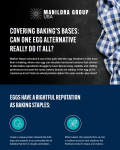Study gives NOAEL level for soy
should be two milligrams, says a new study from Switzerland,
Denmark and Italy.
The study, published in this month's issue of the Journal of Allergy and Clinical Immunology , offers industry and regulators an insight into the extent of soy allergy in Europe, and might impact food-labelling directives.
"We performed, for the first time, a clinical multi-centre study on food allergy to soy in Europe, including double-blind, placebo-controlled food challenges and determination of threshold levels for clinical reactivity to soy," wrote lead author Barbara Ballmer-Weber from University Hospital, Zurich Escalating incidences of food allergies in Europe and the desire to avoid potentially harmful consumer confusion underpinned changes to the Labelling Directive 2000/13/EC due to enter into force last year that essentially flag up to the consumer possible allergens in a food product.
The amendment heralds the mandatory inclusion on food labels of the most common food allergen ingredients and their derivatives: cereals containing gluten, fish, crustaceans, egg, peanut, soy, milk and dairy products including lactose, nuts, celery, mustard, sesame seed, and sulphites.
There is no current cure for food allergy and vigilance by an allergic individual is the only way to prevent a reaction.
The researchers from three allergy canters in Zurich, Odense, and Milan took part in the study on soy allergy within the European Union Project FAREDAT (5th Framework Programme).
Thirty patients (average age 26.4, 19 female) were included in the study.
"The prevalence of soybean allergy in the general population is unknown, and few data exist on class I food allergy to soy in Europe," explained Ballmer-Weber.
The volunteers' blood were analysed for specific immunoglobulin E (IgE), the predominant antibody associated with an allergic response, to soy, peanut, and soy proteins, Bet v 1 and Gly m 4.
"None of our patients with soy allergy reacted to the starting dose of 2 mg of soy (1 mg of soy protein), which thus was the NOAEL for our study population," wrote the researchers.
Sensitivity towards the soy was less that that observed with peanuts, they added, with the threshold doses more than one order of magnitude higher than observed in peanut allergy.
"Knowledge of the severity of symptoms of soy allergy and the threshold dose of soy is most important and might have a major effect on food-labelling directives," wrote Ballmer-Weber.
Source: Journal of Allergy and Clinical Immunology June 2007, Volume 119, Issue 6, Pages 1489-1496 "Clinical characteristics of soybean allergy in Europe: A double-blind, placebo-controlled food challenge study" Authors: B.K. Ballmer-Weber, T. Holzhauser, J. Scibilia, D. Mittag, G. Zisa, C. Ortolani, M. Oesterballe, L.K. Poulsen, S. Vieths and C. Bindslev-Jensen














